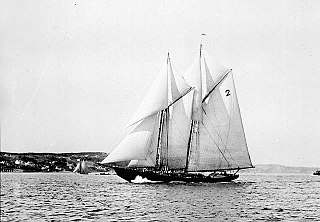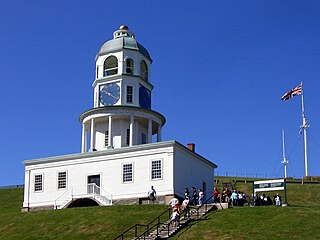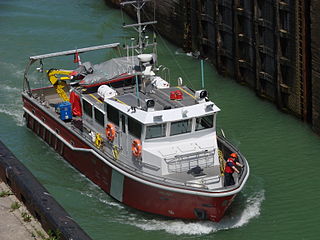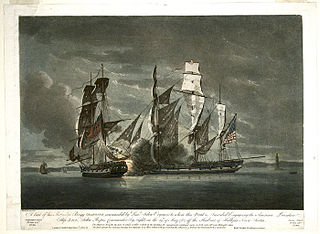
Camp Norway was a Norwegian military training facility located in Lunenburg, Nova Scotia, Canada, during the Second World War. [1]

Camp Norway was a Norwegian military training facility located in Lunenburg, Nova Scotia, Canada, during the Second World War. [1]
When Hitler invaded Norway, the Norwegian whaling ships were at sea and eventually got re-directed to Halifax. During the spring and summer of 1940, seven factory ships and 22 or 23 whale catchers with upwards of 2,000 men on board arrived in Halifax and anchored in Bedford Basin. After much negotiation, the Norwegian government was allowed to establish Camp Norway in Lunenburg. Camp Norway was opened on Friday, November 29, 1940, consisting of a training centre and barracks to house about 800 men. The buildings now owned by ABCO Industries.
At Camp Hill Cemetery in Halifax there are 17 graves of Norwegian sailors, soldiers and merchant seamen who died in Nova Scotia during World War II. At Hillcrest Cemetery (Lunenburg, Nova Scotia) there were four Norwegians buried.


Lunenburg is a port town on the South Shore of Nova Scotia, Canada. Founded in 1753, the town was one of the first British attempts to settle Protestants in Nova Scotia.

Bluenose was a fishing and racing gaff rig schooner built in 1921 in Lunenburg, Nova Scotia, Canada. A celebrated racing ship and fishing vessel, Bluenose under the command of Angus Walters, became a provincial icon for Nova Scotia and an important Canadian symbol in the 1930s, serving as a working vessel until she was wrecked in 1946. Nicknamed the "Queen of the North Atlantic", she was later commemorated by a replica, Bluenose II, built in 1963. The name Bluenose originated as a nickname for Nova Scotians from as early as the late 18th century.

Citadel Hill is a hill that is a National Historic Site in Halifax, Nova Scotia, Canada. Four fortifications have been constructed on Citadel Hill since the city was founded by the English in 1749, and were referred to as Fort George—but only the third fort was officially named Fort George. According to General Orders of October 20, 1798, it was named after King George III. The first two and the fourth and current fort, were officially called the Halifax Citadel. The last is a concrete star fort.

Camp Hill Cemetery is a cemetery within Halifax, Nova Scotia, Canada. It is located on Camp Hill, adjacent to Robie Street.

Canadian Forces Base (CFB) Halifax is Canada's east coast naval base and home port to the Royal Canadian Navy Atlantic fleet, known as Canadian Fleet Atlantic (CANFLTLANT), that forms part of the formation Maritime Forces Atlantic (MARLANT).

HMCS Rimouski was a Royal Canadian Navy Flower-class corvette which took part in convoy escort duties during the Second World War. She fought primarily in the Battle of the Atlantic. She was named after Rimouski, Quebec.

Halifax, Nova Scotia, was originally inhabited by the Miꞌkmaq. The first European settlers to arrive in the future Halifax region were French, in the early 1600s, establishing the colony of Acadia. The British settled Halifax in 1749, which sparked Father Le Loutre's War. To guard against Miꞌkmaw, Acadian, and French attacks on the new Protestant settlements, British fortifications were erected in Halifax (1749), Bedford (1749), Dartmouth (1750), and Lawrencetown (1754). St. Margaret's Bay was first settled by French-speaking Foreign Protestants at French Village, Nova Scotia, who migrated from Lunenburg, Nova Scotia, during the American Revolution. All of these regions were amalgamated into the Halifax Regional Municipality (HRM) in 1996. While all of the regions of HRM developed separately over the last 250 years, their histories have also been intertwined.

Fort Edward is a National Historic Site of Canada in Windsor, Nova Scotia, and was built during Father Le Loutre's War (1749-1755). The British built the fort to help prevent the Acadian Exodus from the region. The Fort is most famous for the role it played both in the Expulsion of the Acadians (1755) and in protecting Halifax, Nova Scotia from a land assault in the American Revolution. While much of Fort Edward has been destroyed, including the officers' quarters and barracks, the blockhouse that remains is the oldest extant in North America. A cairn was later added to the site.

The Old Burying Ground is a historic cemetery in Halifax, Nova Scotia, Canada. It is located at the intersection of Barrington Street and Spring Garden Road in Downtown Halifax.
John James Kinley was an industrialist, pharmaceutical chemist, journalist, ship owner and political figure in Nova Scotia, Canada. He represented Lunenburg County in the Nova Scotia House of Assembly from 1916 to 1925 and from 1928 to 1930 and Queens—Lunenburg in the House of Commons of Canada from 1935 to 1945 as a Liberal member. Kinley sat for Queens-Lunenburg division in the Senate of Canada from 1945 to 1971.

The Raid on Lunenburg occurred during the American Revolution when the US privateer, Captain Noah Stoddard of Fairhaven, Massachusetts, and four other privateer vessels attacked the British settlement at Lunenburg, Nova Scotia on July 1, 1782. The raid was the last major privateer attack on a Nova Scotia community during the war.

Nova Scotia is a Canadian province located in Canada's Maritimes. The region was initially occupied by Mi'kmaq. The colonial history of Nova Scotia includes the present-day Canadian Maritime provinces and the northern part of Maine, all of which were at one time part of Nova Scotia. In 1763 Cape Breton Island and St. John's Island became part of Nova Scotia. In 1769, St. John's Island became a separate colony. Nova Scotia included present-day New Brunswick until that province was established in 1784. During the first 150 years of European settlement, the colony was primarily made up of Catholic Acadians, Maliseet and Mi'kmaq. During the latter seventy-five years of this time period, there were six colonial wars that took place in Nova Scotia. After agreeing to several peace treaties, this long period of warfare ended with the Halifax Treaties (1761) and two years later when the British defeated the French in North America (1763). During these wars, Acadians, Mi'kmaq and Maliseet from the region fought to protect the border of Acadia from New England. They fought the war on two fronts: the southern border of Acadia, which New France defined as the Kennebec River in southern Maine. The other front was in Nova Scotia and involved preventing New Englanders from taking the capital of Acadia, Port Royal, establishing themselves at Canso.

ABCO Industries is located on the waterfront of the UNESCO World Heritage Site-designated port town of Lunenburg, Nova Scotia.

HMCS Lunenburg was a Flower-class corvette that served with the Royal Canadian Navy during the Second World War. She fought primarily in the Battle of the Atlantic as an ocean escort. She was named for Lunenburg, Nova Scotia.
HMCS Reo II was a former rum-running vessel turned military vessel from Meteghan, Nova Scotia. Built in 1931, the ship was used for rum running for five years until Prohibition ended, and was turned into a coastal freighter. She was commissioned during World War II by the Royal Canadian Navy as an auxiliary minesweeper. Declared surplus by the navy in 1945, she was sold to private interests in 1946. Reo II ended up in Lunenburg, Nova Scotia under the care of the Lunenburg Marine Museum Society. In 1984 Reo II was deemed unfit for repair, and was scuttled off Halifax, Nova Scotia in 1985.
HMCS Quinte was a Bangor-class minesweeper constructed for the Royal Canadian Navy during the Second World War. The ship entered service in 1941 and took part in the Battle of the Atlantic. On 30 November 1942, Quinte ran aground and sank off Cape Breton Island. The ship was re-floated and repaired and spent the rest of the war as a training ship. Following the war, the minesweeper was used for naval research until decommissioned in 1946. The vessel was sold for scrap and broken up in 1947.
HMCS Swift Current was a Bangor-class minesweeper that served with the Royal Canadian Navy during the Second World War. Entering service in 1941, the warship used as a training ship and convoy escort and took part in the battles of the St. Lawrence and the Atlantic. Following the war the ship was laid up until reacquired during the Korean War. Never re-entering service with Canada, Swift Current was sold to the Turkish Navy in 1958. Renamed Bozcaada, the minesweeper was discarded in 1971.
The Hillcrest Cemetery is the oldest protestant cemetery in Lunenburg, Nova Scotia and one of the oldest in Canada. The cemetery is adjacent to the Lunenburg Academy. The oldest marker is dated 1761, eight years after Lunenburg was established. Hillcrest Cemetery contains 5 Commonwealth war graves from World War I and one from World War II.

The Province of Nova Scotia was heavily involved in the American Revolutionary War (1776–1783). At that time, Nova Scotia also included present-day New Brunswick until that colony was created in 1784. The Revolution had a significant impact on shaping Nova Scotia, "almost the 14th American Colony". At the beginning, there was ambivalence in Nova Scotia over whether the colony should join the Americans in the war against Britain. Largely as a result of American privateer raids on Nova Scotia villages, as the war continued, the population of Nova Scotia solidified their support for the British. Nova Scotians were also influenced to remain loyal to Britain by the presence of British military units, judicial prosecution by the Nova Scotia Governors and the efforts of Reverend Henry Alline.
The Battle off Halifax took place on 10 July 1780 during the American Revolutionary War. The British privateer Resolution fought the American privateer Viper and heavy casualties were suffered by both sides. The battle was "one of the bloodiest battles in the history of privateering.... a loss of 51 lives in a single battle was virtually unheard of."